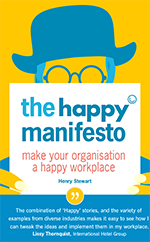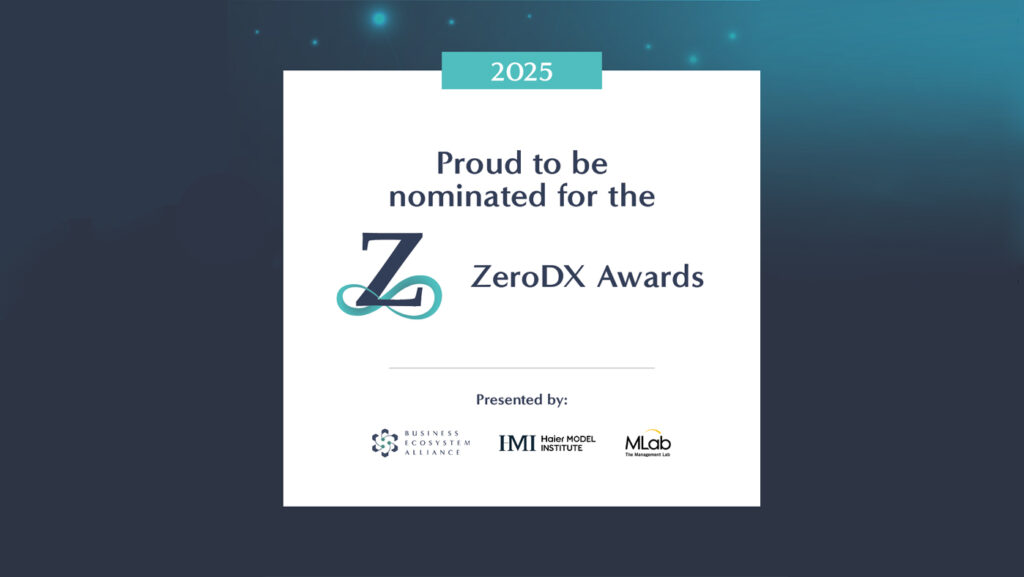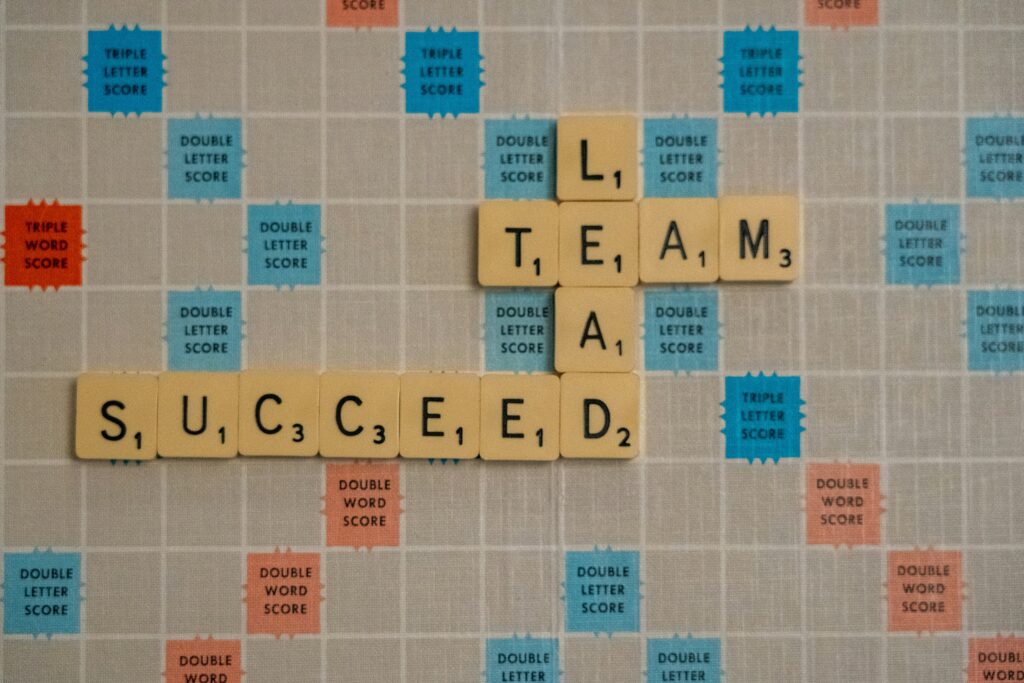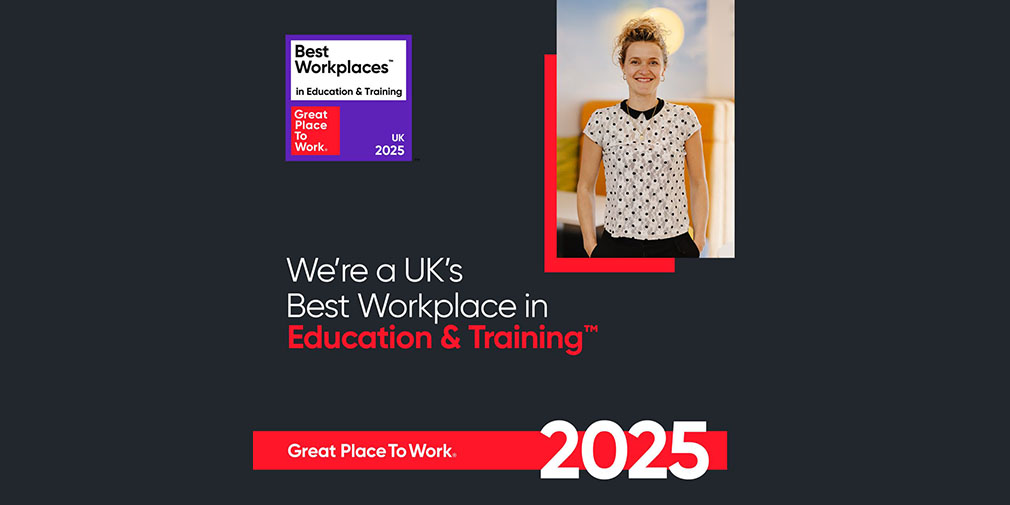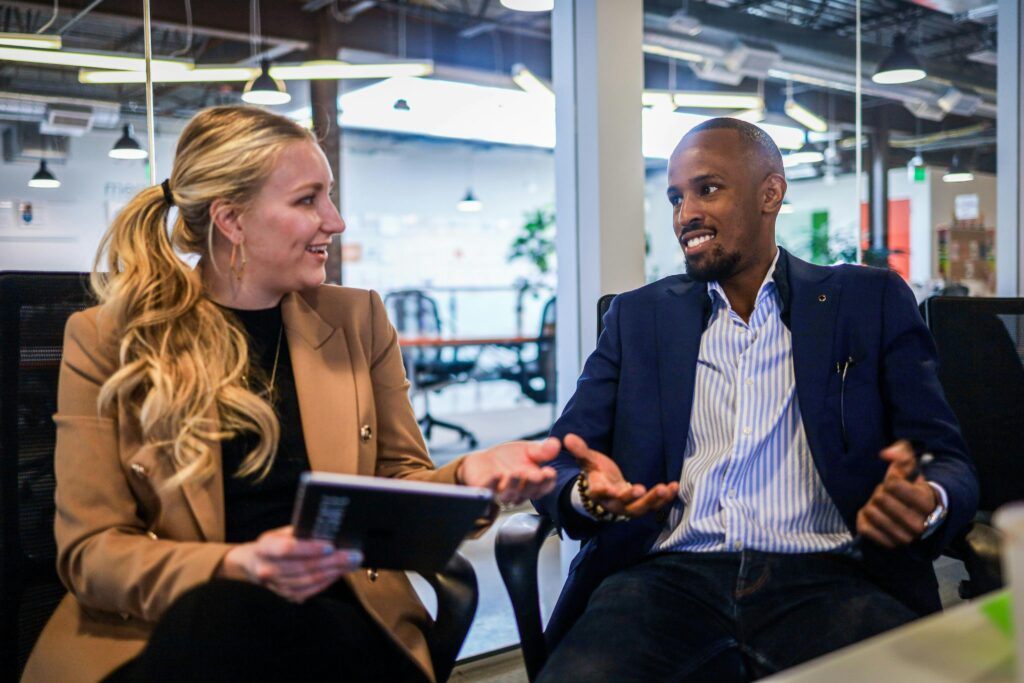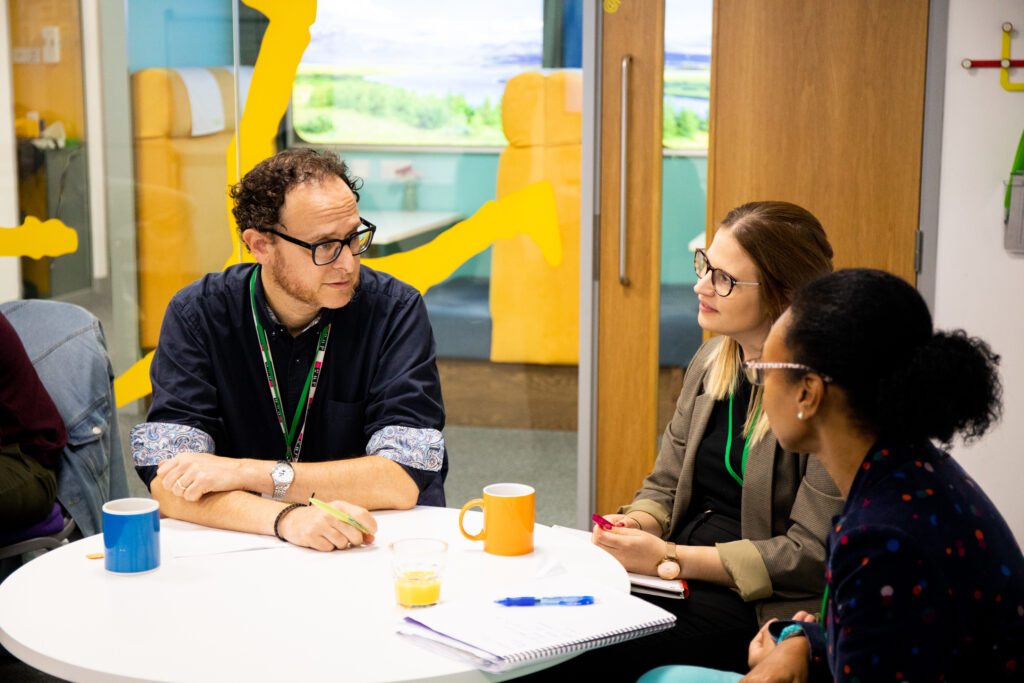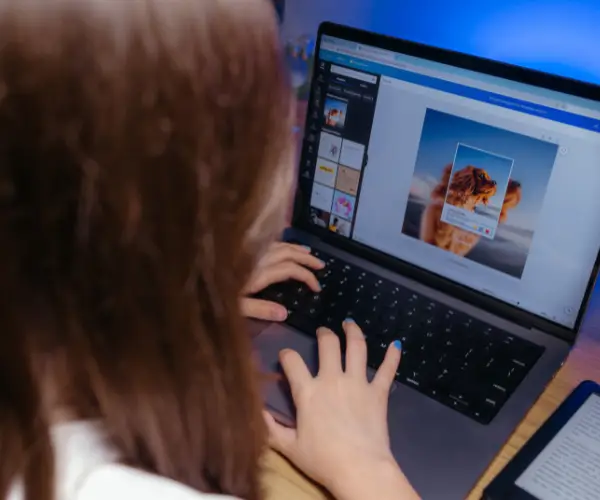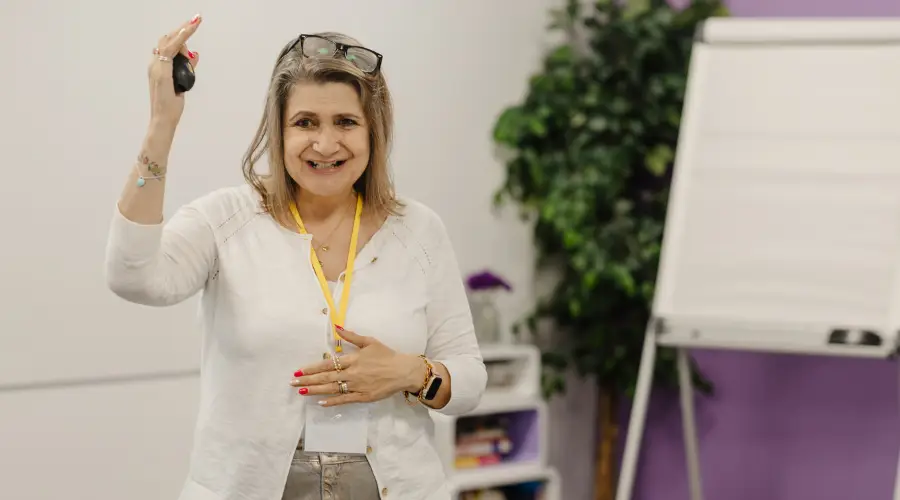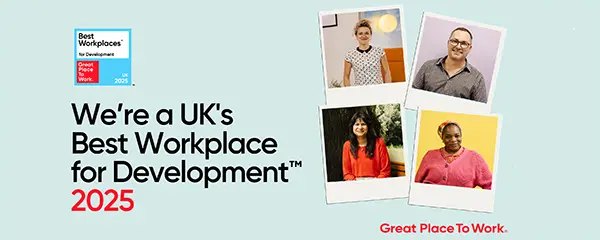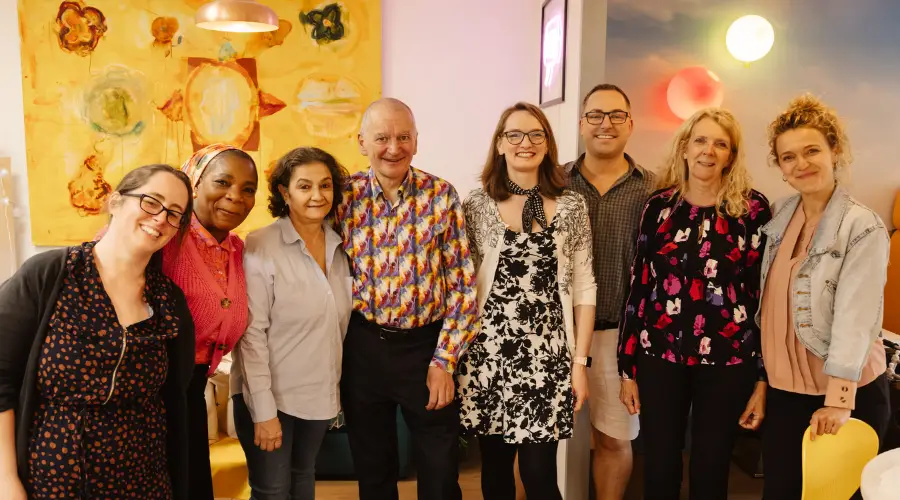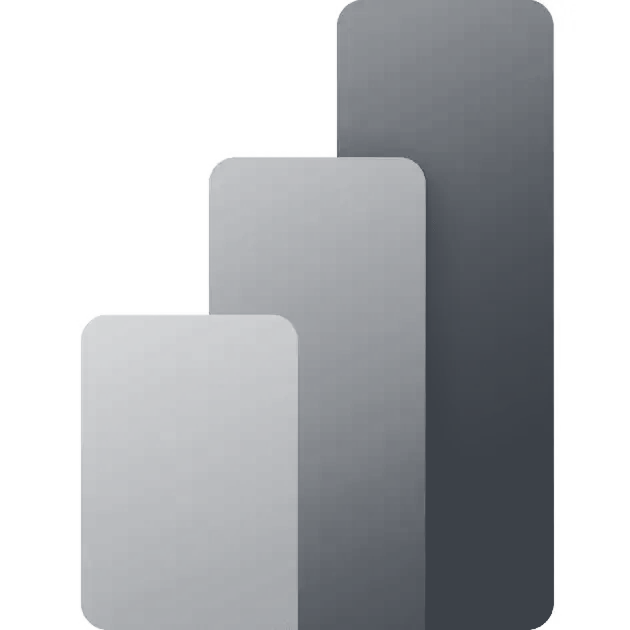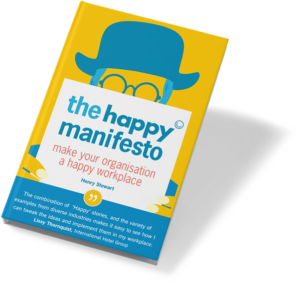To start off I need to confirm two things. One is I am actually a human. If you look at my corporate photo, I find it a little bit too glossy and clinical. So I thought I’d share some photos of me, the human, the person. And the other thing I need to confirm is I do in fact work in HR. In fact, I accidentally fell into HR about 12 years ago and I absolutely love it. I never went to uni thinking I was going to be in HR, but I can’t imagine actually leaving.
The thing that I love about HR is that it is in almost every company in the world and in almost every country in the world. It has a really, really valuable role to play in how organisations shape themselves. When you consider the mantra that our company is our people, then HR’s role is making sure that the company truly lives that mantra.
The thing is, though, I fundamentally believe that HR does need to change and adapt to become fit for the 21st century. What I want to share with you today are some of the things that we’ve been experimenting with in Sky HR that are allowing us to make sure that we are truly putting the human back into our company.
If I don’t particularly feel sociable at a barbeque and someone asks me the inevitable question, ‘what do you do?’ I always say HR and they always walk away from me. I think that HR is a function that is actually quite misunderstood and in some cases feared within organisations. You can imagine that the words that will strike fear into your heart more than most at work would be, ‘HR’s looking for you.’
What I’ve been surprised by is the more that I’ve actually gone out and spoken to people to try and understand what they think HR does, what they tell me is really, really simple. It’s to hire and fire people; that’s what HR does. And I go, ‘oh you’re so wrong,’ but that’s what they believe. That’s the reputation that HR has for a lot of people. We might want to not wish it to be true, but if you ask people that question that is generally the answer they will give you.
So I fundamentally don’t believe it’s true – in fact HR has got a lot of value to add to almost every company that it’s part of. I’d like to actually put the challenge to you and get straight into an exercise to start off with. About a third of the people in this room, just purely going on job titles, are based in HR so hopefully you’ve got a couple of those at your table. I’d like you to grab a piece of paper and a pen and I want you to see how many practices and big processes you can think of that are HR’s contribution to a company. I’m going to give you two to start you off: basically, hiring and firing.
I stopped when I got to 21, so your challenge in three minutes is to think of at least 21 processes or practices that HR contributes to most companies in the world. Go.
OK, let’s see if you passed the HR test and if you don’t, HR’s looking for you. I’m going to just reveal 21. You can see how you went. These are my words, you can replace them with synonyms if you prefer. I’ve probably missed some that you’ve come up with as well.
The point was to actually indicate that as organisations over the late 20th century and into the 21st century have got more complex, what HR has done is got more complex. Let me choose on one of these, let me choose number nine.
Raise your hand if you work for a company that has stated values. Thank you. Who has behaviours that are important to us as a company? Who has competencies or capabilities? Who has all three of the above and who can tell me what they all are? I can tell you that the average employee probably can’t.
So what’s happened over time is that the reason that people don’t know what HR does is because we’ve become too complex. Some people actually don’t care about what HR does because they see it as over-complex, a waste of time and something that is quite frustrating. And there’s a whole bunch of other people that just think HR’s bollocks.
This is the point: actually HR is ripe for actually making its contribution to organisations different, but the way that we’re going to have to make that difference happen is by doing something about either the size of this list or the way in which we do all of these things.
I want you to go back through your list and I want you to identify – this is where you can start to do some homework when you go back tomorrow – from your list, I want you to identify all the processes or practices that you think the average employee would consider useful. They’d go, ‘I’m so glad that HR has created that process for me. It adds so much value to my life.’
The second question would be, which ones would the average employee say, ‘HR’s made that super simple’?
And lastly, here’s the challenging one, how many of the average employee would go, ‘That HR process? Love it, so enjoyable, so interesting’?
So can I get you to go through your list and see how many you can actually stretch to find to go into one or more of those criteria. Can I get a show of hands for how many people were able to identify five or more that met any of these criteria?
Most of them are useful? Great, give me an example. Payroll? There are a couple on this list, you’re right, like benefits and payroll, that most people do find intensely useful. And wellbeing, excellent – I should’ve had that one up there as well. How many people weren’t able to get to five that met the criteria of useful, simple or enjoyable? Quite a few. Did anybody have an enjoyable one? Salaries, yep, pay – yay! Some of the training?
So the good news is that we are capable, as a function, of making things one of these. It’s actually quite an important metric to start to gauge our work against as we go into the next decade and beyond. If the things that we’re creating in HR are not of use then actually HR’s role in the company is much less useful. I think we can start to hold ourselves to a much higher standard of contribution today than we have perhaps in the past and that’s why I’m actually genuinely excited to work in HR and really proud to be an HR professional.
So one of the things that’s happened is technology has had a massive impact on our experience. If you work for a company that has customers than you almost certainly have realised this growing obsession around customer experience. That is the thing that companies are striving to be brilliant at because if they don’t, what happens to them as a company? They die. Well said. You can’t compete as a company if you are not starting to put your customers more and more at the centre of what you do. And Amazon has just absolutely blown that criteria, that standard out of the water.
UX – user experience. If you’re a company that creates products, particularly if you design products, then user experience is something that again you are obsessed about. This is something that Apple actually really again raised the standard on completely.
This is the one that actually I get really excited about, that the emerging role for HR to play is in the world of employee experience, also known as EX. So we now have our own acronym that we can play with.
The thing that is similar with of all these three things is it’s actually about delighting people. Customer experience is about delighting our customers, because if we delight them then they buy more from us, they tell other people, they come back; if we design a product that delights people in terms of its user experience, then they keep using it, they tell others, they buy more; and the employee experience is about how do we have employees that are delighted to work for our company, that believe that we do truly see people as the heart of our business?
This is a really emerging field that’s one that I think we could even see HR go from being personnel to HR to people to people experience, and actually see that role change over time. I think employee experience is HR’s destiny, to sound quite dramatic, and the reason for that is because HR’s role is about putting the human back. As our world and our workplace becomes more technology-driven, which is devoid of the human, that our role can be how do we help humans and machines work really well together? How do we actually help them delight each other?
The trouble is that we can’t reach our destiny if we continue to do what we’ve always done. This is where the big opportunity is. We have to actually be really willing to embrace new mindsets and methods. I’m going to talk with you about two of them this afternoon that we have – and I will use his word intentionally – been experimenting with in our team in HR at Sky. Because there is no roadmap, there is no blueprint, there is no best practice, you just have to be willing to give something different a go and we decided to do that.
The two things that I want to talk to you about are actually design thinking and agile. Can I get a sense of who’s heard of design thinking before? And who’s heard of agile before? OK, so more have heard of agile. For me these two things go really hand in hand. Design thinking is simplified as problem finding and it’s a really important component before agile can really be effective. Because agile, in its simplest form, is about problem solving.
What the key thing here is that if you don’t truly understand the problem that you are trying to solve, then it doesn’t actually matter what method you use for solving the problem. So these two go really hand in hand. I’m going to give you an example.
We’ve been working with agile for about three years, been working/playing with design thinking since last year and one that we’ve really gone after – this is a very recent story; we’re live in it right now – is we went after number 13 on my list: career development with design thinking.
Let’s think about career development. It’s a really hot topic. Who does see it as a real priority for their organisation? It’s a really hot topic for us – for us career development is one of the main reasons, going forward, that people will either choose to join our company or will choose to leave, because they don’t see progression, they don’t see growth. So we really wanted to crack this. The problem is that if we went after that in the way that HR always has then actually I truly believe we won’t solve the problem.
I’m going to list here all the ways that HR might do it and I do have to confess I have done almost every one of these in my career. You can help me work out why this wouldn’t have solved the problem. So firstly we could look into our HR best practice guide or our HR toolkit and look for an answer to career development. This is actually what happened to me when I got given the challenge of career development and I was told the answer to career development was job architecture. And I went, no it’s not. If we had done that, I believe, we would not have solved the problem.
I could’ve hired a consultant of any price to give me advice about how to solve this problem and I wouldn’t have solved the problem. I could’ve created some resources and some guidelines, converted them into PDFs, put them on our LMS, made them available to everybody. Done that many times. I could’ve created a microsite dedicated to career, hoping that people could find it when they needed it most, but they probably couldn’t. I could’ve created competency frameworks galore and career paths galore and hope that they’re not out of date in about three days, because my company changes all the time. I could’ve rolled out a training solution called Navigate Your Career at Sky or I could’ve procured a new piece of HR technology that has been promised to me, because I don’t truly understand what it does, that it’s going to solve all of my career problems for me.
Has anyone done any of these things? Now what’s the problem here? And that is the key question – do we even know what the problem is? If we don’t start with finding out what the problem is, we can’t possibly solve it. So here’s what we’ve done. For what’s it worth, I’ll tell you it’s an experiment, it’s imperfect, but it’s worth a go. We embraced design thinking, which is about problem finding and you always start design thinking with a really great question.
And if there’s one nickable you take today it would be any question that starts with ‘how might we…’ almost certainly will get a different conversation than if you started it with ‘what can we…’ ‘How’ is action focused, rather than ‘what’, which is a thing or a noun. ‘Might’ is an openness to possibility – we don’t know the answer – whereas ‘can’ is a capability question. And ‘we’ is about collaboration. ‘How might we?’ opens up the conversation.
So we went after the question, ‘how might we help people at Sky have a fulfilling career?’ It’s a big, bold question, but we went after it. And what my team did is then embrace the design thinking model – what is, what if, what wows, what works? I’ll take you through. This started in February, so it’s hot off the press.
So what they did with ‘what is’ – ‘what is’ is where you actually go and talk to people about what, in this case, career means to them. What they think the obstacles are, what has helped them in their career, where they feel it’s been easy and where it’s been difficult. My team, in eight workdays, spoke to 25 employees. New starters, people who were leaving or had left Sky, people who had been there for five years, 10 years, 20 years. They spoke to them face to face, in person, for 90 minutes.
The thing that we were stunned by is that, I don’t know about you but Sky have a back-to-back meeting culture – to get time into people’s diaries you need about six weeks notice. People fell over themselves to give 90 minutes of their diary to talk about this. What does that tell you about this topic? It’s really, really important to people. We found out their pain points, we found out their motivations, we understood that career actually means about eight different things to people. And if we didn’t ask those questions, again we probably would’ve solved the wrong problem.
The second thing that we then did was go after ‘what if?’ This is where actually and importantly you get employees, our people, involved in the brainstorming. They actually come in and help us with the creative thinking. This whole way through the design thinking the principle is co-creation. HR doesn’t have to have the answers. We don’t have to know what the right thing is. The best way that we’re going to solve it is by asking our people to help us solve it for them, because this is about solving something for the employee for the person, not for HR. That’s a really key difference.
The third thing: ‘what wows?’ What the team then does is take all of this data and all of this insight and comes up with four ideas that it thinks people will actually respond well to, it thinks that people will go ‘wow.’ And it might do it up as a drawing, I think they did one of them up as Lego, it doesn’t matter, it’s to try and represent the idea. And then again they go back and they go, ‘I want to present this idea to you,’ and they’re not actually really that interested in what the person says. What do you think they’re looking at? Their reaction.
So if I show you an idea, what will your face do immediately? It’ll either light up and go, ‘wow, that’s a great idea,’ or they’ll do this [feigns look of ambivalence]. And if they do that, then we probably haven’t quite nailed the idea. But in this instance what we’re doing is we’re presenting an idea. It’s really risky – people don’t actually like presenting ideas for critique, so it is quite a bold and brave move – but what they’re looking for is what they look like, what their body language is, because remember what employee experience is about is delighting people, creating a real wow experience. And again design thinking allows you again to go through that process.
Where we’re at at the moment is we’re in the ‘what works?’ phase. The important thing here is this has taken eight weeks, its cost no money. You might think, ‘Sky, big company, big money.’ Not in my budget. So the goal here is we’ve done a lot with very little, which makes it so accessible to so many companies and HR teams.
What we’ve got is we’ve actually got three ideas that passed the ‘what wows?’ criteria; one of them got dumped. What we’re going to do throughout the summer is we’re going to now spend a little bit of money to take them from a sketch into something that people can touch and feel. We’re going to see which of them actually solved the problem. So people actually say to us, ‘that was really useful. It helped me feel like I could navigate my career. It was super simple. I could use this again and again. I actually enjoyed using it. I would recommend it to others.’ And if we can meet at least two of those criteria for each of our ideas, then we’ll go to the stage where we actually invest some more money.
All of this is done iteratively and this is the really key thing and this where agile actually comes in. So agile – has anyone seen this diagram before? It’s a really easy way to describe agile. Basically, MVP, minimum valuable product, some people say viable product. What we’re about is – I’ve got to tell you, I have been a legend at this my whole career – I’ve been great at telling people to wait while I build something bright and shiny. It’s going to be awesome, you’re going to love it, but you have to wait. My record to date is I told people to wait and made them wait 12 months for a leadership development programme. That’s not cool, you can’t do that in 2019.
So what happens is, what MVPs work like is, what’s the problem we’re trying to solve here? What’s the problem, you think? To get from A to B faster. So HR’s taken the brief and gone, ‘then we need a car.’ It’s like, no that’s actually not true – what we need to look at is, to get from A to B faster, we need something with wheels. Let’s start with a skateboard, and they go, ‘Hmm I didn’t really enjoy the skateboard experience. It was a bit wobbly.’ OK, let’s give you a handle on the scooter. ‘I am getting there faster, but I need something even faster.’ OK, well let’s give you a bike, let’s give you a motorbike. ‘And now I’d like to be more protected from the elements. I’d like to feel a bit safer.’ I’ll give you a car. Actually what you’ve been learning all the way along is what people liked and didn’t like. And actually we’ve always been surprised in the last three years how many times we’ve given people a skateboard and it’s been absolutely enough.
So what we’re going to be doing is, going into the summer, we’re going to take our three ideas, we’re going to test it with a thousand employees and going into then the autumn, we’ll take one or the two or the three that have passed the ‘what works?’ test and we’ll give it a bit more money and bit more investment. But the key thing in that is we’ll come out of it having a lot more confidence that we’re actually solving the problem and we’ll have a thousand of our own people advocating for that solution. This is how you develop employee experiences.
To conclude, my name is Tracey and I’m putting the human back into Human Resources. Thank you very much.
